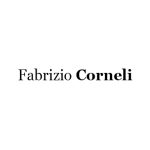Classic / Mohamed Ogbi, Proimpact, Proimpact Marketing Consultancy / December 19, 2016
The Creative Brief – Proimpact Blog
There is no document that outlines the creative concept or idea development stage. The documents we have looked at-the marketing plan and creative brief-concentrate on marketing assessments and an overall communication profile.
Creative, its interpretation and its ultimate ability to produce a sale, is the driving force behind any integrated marketing communication (IMC) ad or campaign. If creative efforts fail,it because the marketing plan failed. The fate of an ad or a campaign is sealed during the development of the creative brief.
Everything creative-copy and layout-begins and ends with the creative brief. Before any brainstorming takes place, before any copy is written or any concept laid out, the creative team needs to thoroughly study the creative brief.
The creative brief lays an informational foundation for the creative team to build upon. It outlines what the IMC creative efforts need to accomplish and is the rational behind creative direction. The creative team will use the knowledge about the target to define the audience they are talking to. Objectives will determine what the creative efforts will need to accomplish; the strategy and positioning will help determine how the message will be delivered and the image and position needed to stand out from the competition. The key benefit will become the voice of the IMC promotion and must dominate all creative executions, both visually and verbally.
A great idea can usually be stated in on sentence: the key benefit. It is what you do with that sentence to bring the idea alive that creates memorable ideas.
How Do You Translate Business Thought to Creative Execution ?
The best place to start to start when trying to develop a great idea is to being with a word list. A word list gets both your left – and right – brain working. It is important to realize that for the most part, a great idea will not just pop into your head. Great ideas most often come in bits and pieces that will come together at the most unlikely of times. It pays to be prepared and have pen and paper available to corral brilliance when it does come. All creative efforts must be written and designed specifically for your target audience, in a vernacular, or language, they can understand about problems or situations they can relate to, and appear in a medium they frequently see.
There is a lot of bad advertising out there, with no direction, no strong brand identity, and no defined target audience. This kind of advertising usually carries what i call a “ been there,done that” creative label. This means the idea has been used before-sometimes many,many times.
When you have seen something once, it is interesting; when you have seen it two or three times, it is boring. Once consumers are bored, they stop paying attention to the message. Today’s consumer is bombarded with hundreds of advertising message each day. A good creative team recognizes this and looks for an innovative way to make their product stand out among the clutter. EX. GEICO did with the “Gecko” campaign, and Aflac did it with the “Duck” campaign.
Who Are The Creatives ?
Creative as used in this text is a broad term for the conceptual process. A creative is a person who is involved in a creative activity, especially, in this context, involving the creation of advertisements. The creative team is compromised for some very eclectic personalities. Job titles, which are as diverse as the personalities that fill them, depend on where you are in the country and on the size of the agency. I will take here only about the most common and generally accepted titles.
- Creative Director. This title probably varies most across the country, but basically the person is the boss or team leader. He or she handles administrative and/or management functions and is most often involved with television and other high-profile projects.
- Art Director. Job titles range from junior through senior levels. This person is the workhorse of the advertising agency, with their hands in everything. On any given day the art director could be working on newspaper, magazine, point-of-purchase ( POP ) advertising, direct mail, or television for any number of client. The person in this position needs to know a lot about the creative process, from conceptual development to photo shoots to production.
- These team members write copy, and, like art directors, may have a range of titles. Copywriter can find themselves writing copy for multiple media vehicles and even more diverse types of products.
To enhance your business creativity contact on info@proimpact.it









